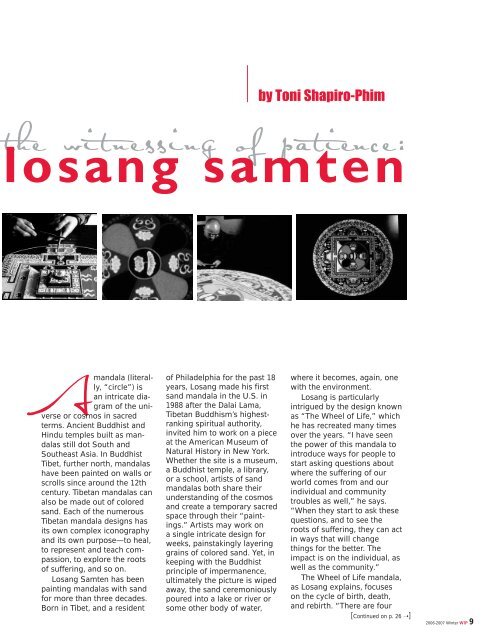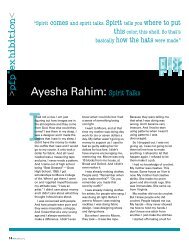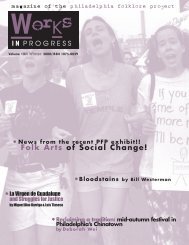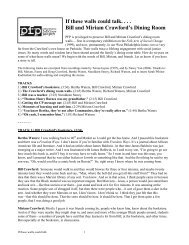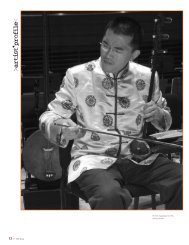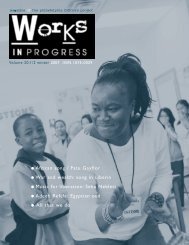View PDF - Philadelphia Folklore Project
View PDF - Philadelphia Folklore Project
View PDF - Philadelphia Folklore Project
- No tags were found...
Create successful ePaper yourself
Turn your PDF publications into a flip-book with our unique Google optimized e-Paper software.
y Toni Shapiro-Phimthe witnessing of patience:losang samtenAmandala (literally,“circle”) isan intricate diagramof the universeor cosmos in sacredterms. Ancient Buddhist andHindu temples built as mandalasstill dot South andSoutheast Asia. In BuddhistTibet, further north, mandalashave been painted on walls orscrolls since around the 12thcentury. Tibetan mandalas canalso be made out of coloredsand. Each of the numerousTibetan mandala designs hasits own complex iconographyand its own purpose—to heal,to represent and teach compassion,to explore the rootsof suffering, and so on.Losang Samten has beenpainting mandalas with sandfor more than three decades.Born in Tibet, and a residentof <strong>Philadelphia</strong> for the past 18years, Losang made his firstsand mandala in the U.S. in1988 after the Dalai Lama,Tibetan Buddhism’s highestrankingspiritual authority,invited him to work on a pieceat the American Museum ofNatural History in New York.Whether the site is a museum,a Buddhist temple, a library,or a school, artists of sandmandalas both share theirunderstanding of the cosmosand create a temporary sacredspace through their “paintings.”Artists may work ona single intricate design forweeks, painstakingly layeringgrains of colored sand. Yet, inkeeping with the Buddhistprinciple of impermanence,ultimately the picture is wipedaway, the sand ceremoniouslypoured into a lake or river orsome other body of water,where it becomes, again, onewith the environment.Losang is particularlyintrigued by the design knownas “The Wheel of Life,” whichhe has recreated many timesover the years. “I have seenthe power of this mandala tointroduce ways for people tostart asking questions aboutwhere the suffering of ourworld comes from and ourindividual and communitytroubles as well,” he says.“When they start to ask thesequestions, and to see theroots of suffering, they can actin ways that will changethings for the better. Theimpact is on the individual, aswell as the community.”The Wheel of Life mandala,as Losang explains, focuseson the cycle of birth, death,and rebirth. “There are four[Continued on p. 26 ➝]2006-2007 Winter WIP 9


